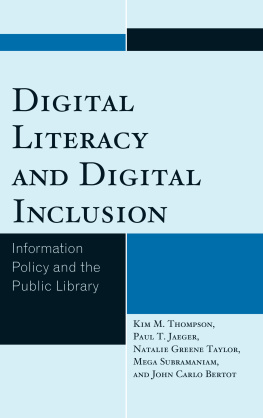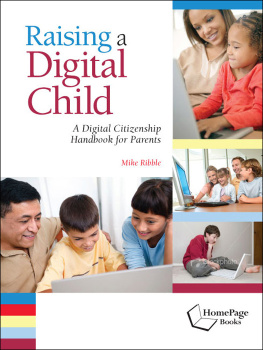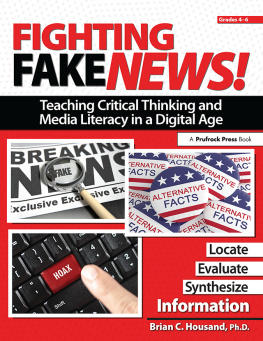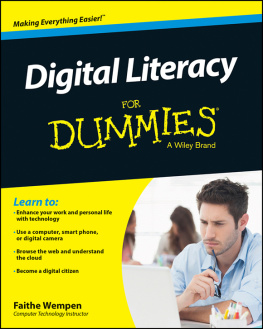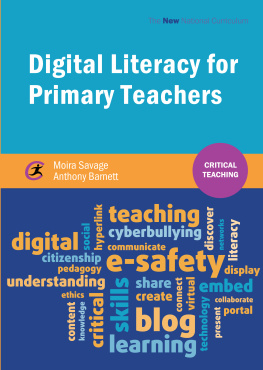
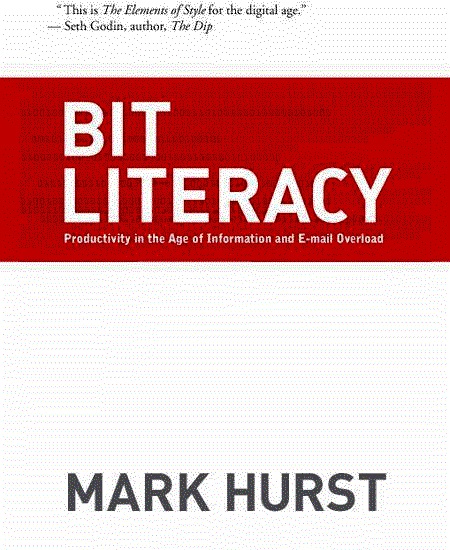
Bit Literacy
01000010011010010111010000100000
01001100011010010111010001100101
01110010011000010110001101111001
Bit Literacy
Productivity in the Age of Information and E-mail Overload By Mark Hurst
Good Experience Press
Copyright 2007 by Good Experience, Inc.
Al rights reserved.
Published in the United States by Good Experience Press, an imprint of Good Experience, Inc., New York.
www.goodexperiencepress.com
Table of Contents
Preface
Part I: The Context
Chapter 1: Bits
Chapter 2: Users
Chapter 3: The Solution
Part II: The Method
Chapter 4: Managing Incoming E-mail
Chapter 5: Managing Todos
Chapter 6: The Media Diet
Chapter 7: Managing Photos
Chapter 8: Creating Bits
Chapter 9: File Formats
Chapter 10: Naming Files
Chapter 11: Storing Files
Chapter 12: Other Essentials
Chapter 13: The Future of Bit Literacy
- - -
Appendix A: Message to Developers
Appendix B: On Mac vs. Windows
Afterword by Phil Terry
Footnotes
Acknowledgements
The Buddha resides quite as comfortably in the circuits of a digital computer or the gears of a cycle transmission as he does at the top of a mountain.
Robert Pirsig, Zen and the Art of Motorcycle Maintenance Preface
I was five years old when I first encountered the digital world. It was 1978, and I was in kindergarten in Subic Bay, Philippines, during my father's Pacific tour as a naval officer.
One day my teacher welcomed a guest speaker to the class, a uniformed marine who carried in a strange, TV-like box and set it on a table. We gathered around, peering at the glowing screen. I was transfixed. Every few seconds, colored blocks appeared al over, in random places. The marine told us to touch the screen.
My classmates and I each put a finger somewhere on the screen. We waited for the computer to refresh the pattern of blocks, and the moment it did, I saw a brightly colored rectangle sitting directly underneath my index finger. It was a strange and exhilarating moment; how had the computer known I was waiting for it, then and there, to appear?
It was only a trivial computer program intended for the class demonstration, but for me it created a pivotal moment. I could feel that I was touching something more than a screen, more than some glowing filaments. I felt a connectionalmost physical yto something deeper, beyond the screen, that was dynamic and responsive, almost alive. So began my lifelong fascination with digital technology.
I grew up during a formative time for the technology industry and became familiar with many kinds of computers, video games, and other digital devices. But by the time I went to MIT to study computer science, something new and different was taking shape: the Internet. Within a few years I witnessed the spread of e-mail and the Web to people al around mefamily, friends, and classmateswho quickly adopted the new tools into their lives.
Today hundreds of mil ions of people around the world are online, using mil ions of websites and applications and over a bil ion e-mail addresses. Computers, cameras, cel phones, PDAs, and a menagerie of other devices connect people to each other across the network, and data floods from device to device in an unending torrent, for an infinite variety of uses: e-mails, phone cal s, photos, videos, meetings, classes, games, music, and on and on and on. Al of the data is made of nothing but tiny electrical impulses, signifying 1s and 0s: these are bits, short for "binary digits."1 Everything digital, everything you see and read and use on a computer or digital device, is made of bits: e-mails, Web pages, computer graphics, spreadsheets and documents, downloaded music, everything.
The popularity and easy access of bits, thanks to the Internet, have created both an opportunityfor new experiences and tools and servicesand a new crisis. People are overloaded by too many bits, everywhere, al the time. I've noticed in recent years that most people don't know how to deal with the constant deluge of bits, and they suffer as a result. Mil ions of people are living with stress, working less productively, and feeling the effects in their personal lives. I've met my share of these people in meetings, at conferences, and in airportsal rushing to their next appointment, paying attention only to their e-mail, or cel phone, always with an anxious, distracted look; too busy to talk, or to think, let alone enjoy life. Meanwhile, the problem is growing: there are more e-mails, more bits of al types, coming at them al the time. For the sake of these people, their families, their employers, and the larger economy, there has to be a better way.
There is a better way. It's something I cal "bit literacy," a set of skil s for living and working with bits in a healthy and productive way. Bit literacy can work for any user, in any occupation, at any age, using any kind of computer, under any load of bits. It just requires learning and practicing some basic skil s. Much like literacy itself, bit literacy can grant a lifetime of benefits, and it doesn't require any special software or expensive tools. The basic principles apply to any situation and any technology where bits appear.
The importance of such skil s in today's world cannot be overestimated. Bits are everywhere, and they're increasing every day; they have changed the world like no other technology since perhaps the invention of paper. This is no longer the industrial age, the atomic age, or the space age. We are now living in the age of bits. Those who know how to work with bits wil master the age; those who don't wil be left further and further behind in every profession and creative pursuit that bits infiltrate.
This book is an invitation to take control of your bits by learning the methods and skil s of bit literacy. The skil s are yours to learn and use; no software, website, or device can do it for you. I've designed the book to make it as easy as possible to understand why and how to start practicing bit literacy. Chapter 1 starts with a description of bits and their unique qualities that give rise to such dramatic opportunities, and problems. Chapter 2
explains why it's your responsibility to practice the solution; and Chapter 3 describes the solution itself: emptiness. In a phrase, bit-literate users must "let the bits go."
Chapter 4 begins "The Method," a set of chapters describing the major skil s involved in bit literacy: managing e-mail, todos, media diet, and photos; creating bits and choosing the right file formats for them; and naming and storing files. Chapter 12 lists other essential tools and skil s that practitioners should learn, and final y in Chapter 13, "The Future of Bit Literacy," I describe why I think practicing the discipline wil become increasingly important. Technical y-minded readers, whom I cal "techies" throughout the book, may also like to read the appendices. Appendix A encourages developers to create more bit-literate tools; Appendix B gives my answer to the "Mac vs. Windows"
debate and describes how my company sets up employees' computers to enable bit literacy.
Part I: The Context
Chapter 1: Bits
Bits are heavy. Though they have no physical weight, bitsthe electronic data that flows in and out of our e-mail inboxes, cel phones, Web browsers, and so onplace a weight on anyone who uses them. A laptop computer weighs the same few pounds whether it holds one e-mail or a thousand, but to the person who has to deal with al those e-mails, there is a big difference. Appearing in large numbers as they often do, bits weigh people down, mental y and emotional y, with incessant cal s for attention and engagement.
Next page

